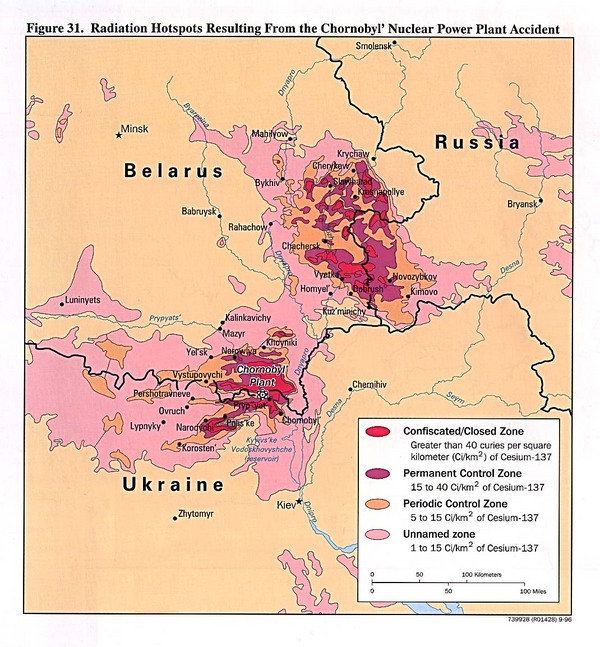Radiation Contamination after the Chernobyl Disaster

Annotation
On April 26, 1986, an explosion at the Chernobyl Nuclear Power Plant in Ukraine led to the radioactive contamination of the surrounding countryside and to radioactive fallout throughout Eastern and Western Europe. In a test of the new Soviet policy of glasnost' (openness), Soviet authorities acknowledged the disaster, though only after Western countries had traced the radiation source to Ukraine. This map, created by the Central Intelligence Agency, reveals the levels of radiation damage inflicted on the Ukrainian, Russian, and Belorussian countryside. The radiation released from the explosion was 100 times that of the atomic bomb dropped on Hiroshima or Nagasaki. 30 to 35 million acres of land were irradiated; this land was home to more than 7 million people in 1986. While Soviet authorities did acknowledge the disaster, offers from international organizations to support relief efforts were rejected. This was an important moment in the history of Gorbachev's reform efforts, demonstrating the limitations of how far Soviet authorities would bend to outside pressure.
Credits
Handbook of International Economic Statistics, Washington, D.C.: Government Printing Office, 1996. Accessed April 16, 2007.